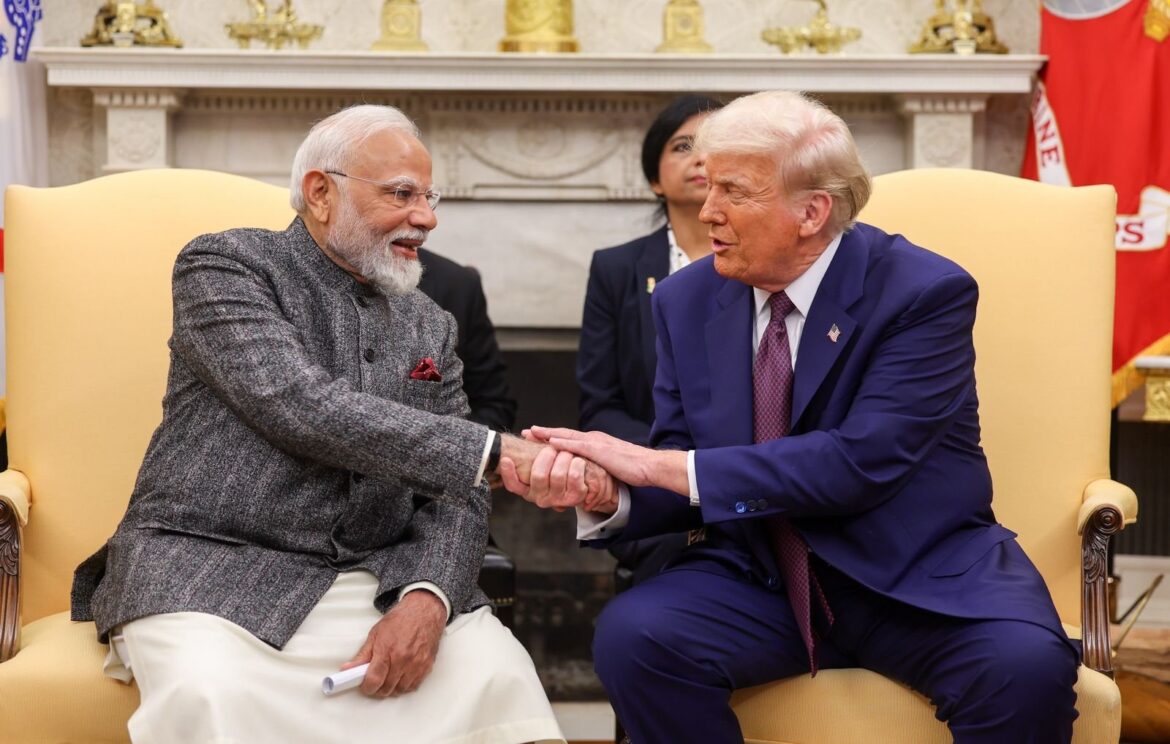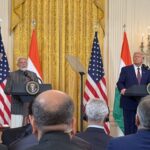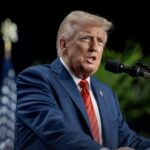In a sharp escalation of trade and geopolitical tensions, U.S. President Donald Trump has announced a 25 per cent tariff on a wide array of Indian exports, effective August 1, 2025, accompanied by a vague but ominous “penalty” clause. The move, unveiled via a provocative Truth Social post, has triggered alarm in New Delhi and drawn immediate attention from India’s Ministry of Commerce.
In a measured response, the Ministry said: “The Government has taken note of a statement by the U.S. President on bilateral trade. The Government is studying its implications. India and the U.S. have been engaged in negotiations on concluding a fair, balanced, and mutually beneficial bilateral trade agreement over the last few months. We remain committed to that objective.”
The Ministry further underscored that the Government attaches the “utmost importance to protecting and promoting the welfare” of its farmers, entrepreneurs, and MSMEs, adding “The Government will take all steps necessary to secure [its] national interest, as has been the case with other trade agreements, including the latest Comprehensive Economic and Trade Agreement with the UK.”
Despite the Ministry’s emphasis on engagement, the gravity of the U.S. action is difficult to understate. Trump’s post accused India of maintaining “obnoxious” non-monetary trade barriers, high tariffs, and continuing defense and energy purchases from Russia—declaring that India “WILL BE PAYING A TARIFF OF 25%, PLUS A PENALTY FOR THE ABOVE, STARTING ON AUGUST FIRST.”
While ostensibly a trade measure, Indian analysts view the tariff barrage as a geopolitical move to pressure New Delhi into aligning more closely with Washington’s strategic priorities, particularly its stance on Russia.
High-Stakes Sectors in the Crosshairs
The United States, which ran a $45.7 billion trade deficit with India in 2024, has now placed $87 billion in annual Indian merchandise exports under threat. Key sectors in the firing line include:
- Auto components: Firms like Bharat Forge face immediate order cancellations.
- Electronics & solar: Clean-tech and device manufacturers anticipate squeezed margins.
- Gems & jewelry: A $9 billion-a-year industry highly reliant on the U.S. market is expected to take a major hit.
- Marine & processed food: WTO-compliant but not spared by the dragnet.
In contrast, critical sectors such as pharmaceuticals, semiconductors, and rare earths have been notably excluded—underscoring the selective nature of U.S. trade targeting, guided more by strategic dependency than trade imbalance.
Strategic Autonomy Under Pressure
Experts believe this is less about economic correction and more about geopolitical compliance. The timing—just before the expiration of a temporary tariff moratorium—and the exclusion of China, with whom the U.S. has eased trade tensions, raise pointed questions.
“This is not about fair trade—it’s about bending policy,” said Prof. Biswajit Dhar, noted trade economist. “It’s a direct challenge to India’s sovereign right to pursue an independent strategic path.”
The unspecified “penalty” clause has deepened concerns. If linked explicitly to India’s Russia policy, it may represent a troubling precedent—one that potentially violates World Trade Organization rules against politicizing trade enforcement.
Diplomatic Brinkmanship or Breakdown?
Even amid provocation, Indian negotiators are signaling continuity. The sixth round of bilateral trade talks remains scheduled for late August. However, negotiations have been bogged down by key sticking points:
- India’s prohibition on GM foods and its refusal to open the dairy sector.
- U.S. insistence on sweeping tariff elimination.
- Indian demands for binding safeguards against future unilateral tariffs—especially on pharmaceuticals.
The goal of finalizing a bilateral agreement by fall 2025 now appears increasingly ambitious. Senior officials privately admit timelines may slip into 2026 unless political intervention—potentially a call between Modi and Trump—occurs.
Exporters Rattled, Economy at Risk
Exporters, meanwhile, are operating in a fog of uncertainty. “The lack of clarity on the penalty clause makes it impossible to price products or close deals,” said Director General of FIEO, Ajay Sahay. “It’s a direct blow to supply chain confidence.”
ICRA’s Chief Economist Aditi Nayar estimates that extended tariff impacts could knock up to 0.5 per cent off India’s FY26 GDP growth. Goldman Sachs has also warned of increased volatility in the rupee and sovereign bond markets.
India’s troubles may not stop at the U.S. border. As American buyers pivot, Chinese goods are flooding European markets—causing Indian exporters to report demand compression in the EU as well.
Political Optics, Strategic Calculations
Trade experts also point to the performative element of Trump’s move. The announcement comes amid rising scrutiny of India’s oil imports from Russia and defense deals with Moscow.
Ajay Srivastava of the Global Trade Research Initiative (GTRI) said, “India’s refusal to make the concessions others did—be it the UK, EU, or Japan—was always going to come at a cost. But none of them walked away from agricultural protections or MSME sensitivities without extracting gains.”
Prof. Ram Singh of IIFT framed it bluntly: “Even a 25% tariff is a price worth paying if it helps India avoid becoming a client state in trade negotiations. Better tariffs than trade surrender.”
Trade as a Weapon, Diplomacy in Flux
Whether Trump’s move is tactical or a signal of structural hostility, the implications are profound. By tying tariffs to geopolitical posture, Washington has blurred the line between economic leverage and coercion. India must now navigate a narrow path—asserting its sovereign interests while managing real risks to growth, employment, and investor confidence.
The coming weeks will test not only India’s trade diplomacy but also its strategic resolve. As exporters brace for disruption and negotiators ready for a contentious sixth round, one fact is clear: the India-U.S. trade relationship has entered a volatile new phase.






